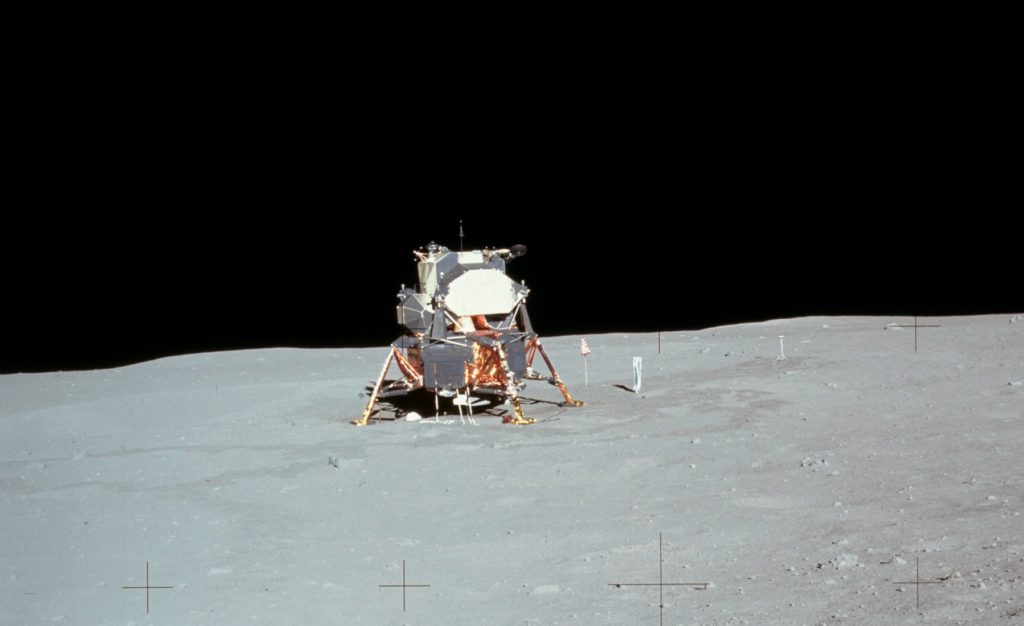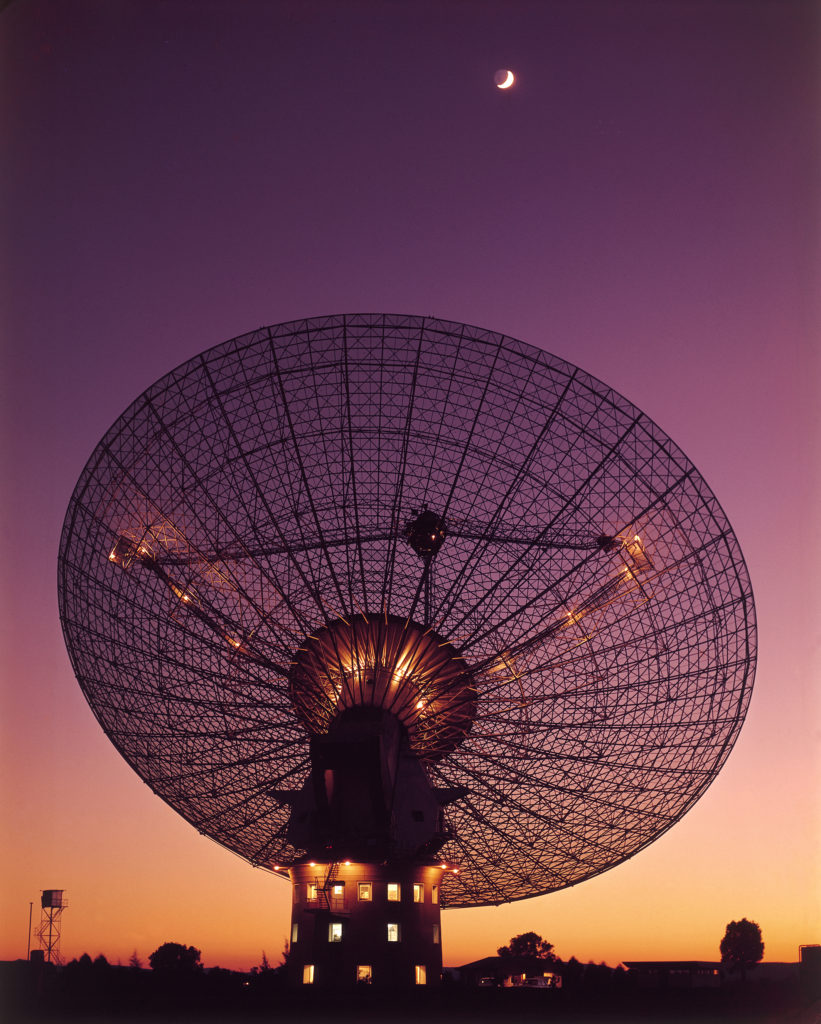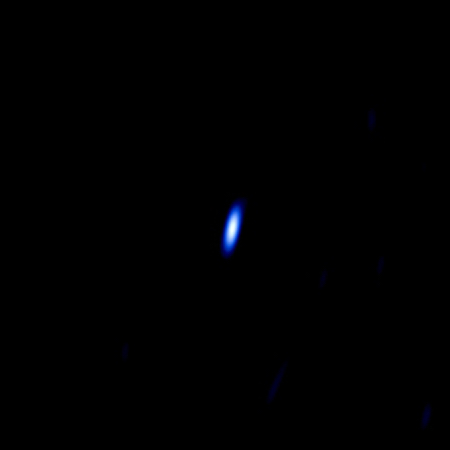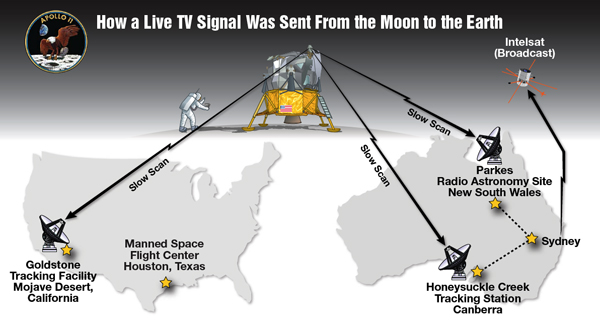“That’s one small step for a man, one giant leap for mankind.” On July 20, 1969 those words were broadcast across the world. Millions watched as Neil Armstrong became the first human to step upon the Moon.
The famous video of Apollo 11 began as a faint, high-frequency transmission from the lunar lander. By the time the signal reached Earth it was too weak to be detected by common radios and televisions. It took radio astronomers with sensitive antenna dishes to capture the signal. The Apollo mission was a tremendous feat of engineering. It was a bold plan never attempted before or since. But it took the ingenuity of radio astronomers to tell its story.

A photo of the Apollo 11 lunar lander, taken by Neil Armstrong. Credit: NASA

Live footage of Neil Armstrong about to set foot on the Moon. Credit: NASA
Radio astronomy grew out of early experiments in the 1930s. Karl Jansky’s first detection of astronomical radio waves demonstrated that radio could be used as another window to the universe. Early radio astronomy focused on bright radio sources, such as the Sun and the center of the Milky Way. Grote Reber built upon Jansky’s work to make the first map of the radio sky. James Stanley Hey made the first detection of radio signals from the Sun, while Ruby Payne-Scott used radio interferometry to show that solar radio bursts originated from sunspots.
During the Second World
Apollo was born out of the cold war, which began when Soviet Union launched the first artificial satellite in October of 1957. Named Sputnik I, the satellite contained a radio transmitter that could be heard around the world. Anyone with a simple short-wave radio could listen to the steady “beep-beep-beep” as Sputnik passed overhead. The battery-powered transmission lasted for weeks, signaling to the world that the Russians were the masters of space.
As the Soviet Union advanced toward crewed missions, the United States followed with its own human space program. In early 1960 the Eisenhower administration began plans to send a man to the Moon within a decade. The plan was made famous by President Kennedy’s proposal to congress in 1961. At the time, only a handful of humans had reached low Earth orbit, only a few hundred miles above Earth’s surface. Kennedy’s challenge was for humans to travel a thousand times farther.

Through radar astronomy, the motion and distance of the Moon was known to within about a kilometer. Precise enough for an attempted landing. Radar-ranging would allow a lander to reach the lunar surface safely. But Apollo still needed to send radio messages from the Moon. And the Kennedy administration wanted to have a live feed of the lunar landing.
By 1962 it was clear that a new kind of radio communication system would need to be developed for Apollo. Both the Mercury and Gemini programs used separate radio systems for voice, telemetry and tracking. This was fine for low Earth orbit, but for lunar

The initial plan was to use radio telescopes built by NASA specifically for deep space communication. Goldstone observatory was built in 1958 by the Jet Propulsion Laboratory to communicate with the early Pioneer missions to lunar orbit. Armstrong’s landing was timed so that Goldstone could capture the signal, as well as the Honeysuckle Creek Tracking Station in Australia. Parkes Observatory (made famous in the movie The Dish) also captured some of the lunar images, though not Armstrong’s first minutes on the Moon. Without radio astronomy, the live images of Apollo 11 wouldn’t have been possible.
Humans last walked upon the Moon in 1972. For now, human missions to the Moon and beyond remain a dream. But robotic missions have entered a golden age of exploration. From the last message of Opportunity on Mars, to the New Horizons images of Pluto, the discoveries of these terrestrial ambassadors are captured by an advanced network of radio telescopes. The demand for more data and higher resolution images will require radio telescopes that are increasingly sensitive to their faint signals. Our success in space is based upon a collaboration between the builders of probes and the watchers of the stars.
We’ve only sent machines beyond the Moon for now, but humans will follow. When they do, their messages home will be delivered by that same radio telescope network. They will capture the faint signal when the first human does set foot upon Mars, and she proudly declares: “And thus, through peace, Humanity has conquered the god of war.”






